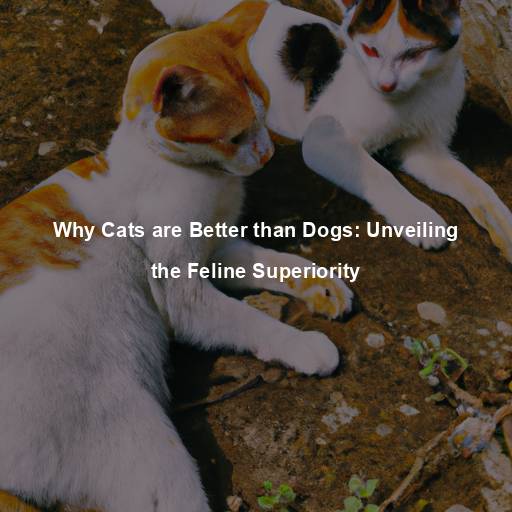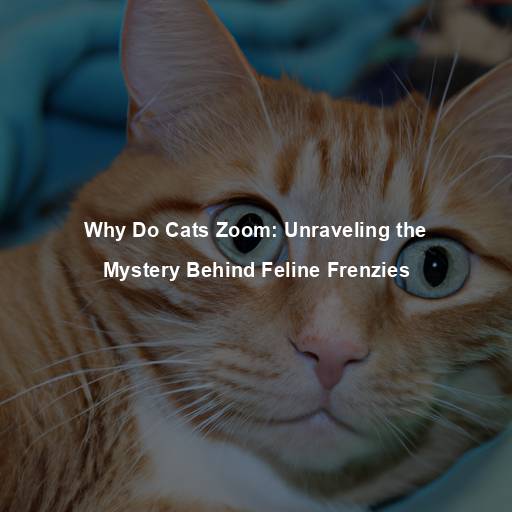Why Do Cats Hiss? Understanding Feline Communication
Last Updated on July 26, 2023 by Evan
Contents [hide]
- 1 The Language of Cats: Decoding Feline Sounds and Behaviors
- 2 Evolutionary Roots: Survival Instincts at Play
- 3 Emotional Expression: Unveiling Feline Feelings
- 4 Social Dynamics: Communication Among Cats
- 5 Responding to Hissing: Dos and Don’ts
- 6 Seeking Professional Advice
- 7 Addressing Hissing Behavior: Tips and Techniques
- 8 Building Trust and Strengthening the Bond
- 9 FAQs: Why do cats hiss?
The Language of Cats: Decoding Feline Sounds and Behaviors
Cats, those mesmerizing beings with their enigmatic nature, possess a communication system so intricate and nuanced that it leaves us humans perplexed yet captivated. Through their repertoire of sounds, body language, and behaviors, cats reveal a wealth of emotions and intentions that often leave their owners bursting with curiosity. However, there is one behavior that never fails to bewilder and concern: hissing. With its sudden and sharp sound, why do cats hiss, and what does it truly signify in the enigmatic world of feline communication?
Understanding the Anatomy of a Hiss
When it comes to decoding the enigmatic habits of our feline companions, one behavior that never ceases to captivate us is their mysterious hissing. Serving as a peculiar vocal expression, a hiss emerges as a forceful expulsion of air from a cat’s mouth, shrouded in an aura of defensive stance. As the cat gracefully arches its back, raises its fur, and flashes its teeth, the hiss becomes an enigmatic warning signal, an unwavering declaration that the cat feels threatened or ill at ease within their surroundings
Evolutionary Roots: Survival Instincts at Play
To comprehend why cats hiss, we need to consider their evolutionary history. Domestic cats share a common ancestor with their wild counterparts, who needed to fend off predators and defend their territory. Hissing is deeply ingrained in a cat’s survival instincts, serving as a means of self-preservation.
Self-Defense Mechanism
When our feline friends encounter a potential source of distress, be it a towering creature, an unknown face, or an unforeseen clamor, their instinctual response kicks in – the timeless art of hissing. Through this captivating act, cats aim to communicate their unease while simultaneously asserting their boundaries. And let’s not forget the remarkable theatrics – the fluffed-up fur that immediately transforms them into a force to be reckoned with.
Protecting Personal Space
Cats, those enigmatic creatures, possess an unwavering affection for personal space. Their territories are sacred, and any encroachment upon their hallowed boundaries can send them into a state of ultimate agitation. Ah, the mighty hiss, a remarkable tool utilized by these feline beings to convey their primal longing for space and to firmly establish boundaries with fellow animals and even us mere humans. It serves as a resounding signal, demanding a swift retreat and an unwavering respect for their divine terrain.
Emotional Expression: Unveiling Feline Feelings
While hissing primarily serves as a defensive behavior, it can also reflect a range of emotions that cats experience. Understanding these emotions can provide valuable insight into a cat’s state of mind and help us decipher the reasons behind their hissing.
Fear and Anxiety
Fear and anxiety are common triggers for hissing in cats. When faced with a threatening or unfamiliar situation, cats may feel a surge of fear or anxiety, prompting them to hiss as a warning. This behavior is often accompanied by other signs of fear, such as dilated pupils, flattened ears, and a tucked tail. It is crucial to create a safe and secure environment for cats to minimize their stress levels and reduce the likelihood of hissing.
Aggression and Agitation
In some cases, hissing can be an expression of aggression or agitation. Cats may hiss when they feel provoked, cornered, or challenged. This aggressive hissing is usually accompanied by other aggressive behaviors, such as growling, swatting, or lunging. It is important to identify the underlying cause of the aggression and address it appropriately, ensuring the safety of both the cat and those around them.
Pain and Discomfort
Cats may also hiss when they are in pain or experiencing discomfort. In such instances, hissing serves as a defensive response to prevent further contact or handling that may exacerbate their discomfort. If a cat suddenly starts hissing without an apparent reason or displays other signs of distress, it is crucial to seek veterinary attention to identify and address any underlying health issues.
Social Dynamics: Communication Among Cats
Hissing, commonly linked to defensive actions, actually showcases a captivating complexity within feline social dynamics. Whether roaming the wild or cozying up in domestic surroundings, cats unveil sophisticated hierarchies and employ hissing as a crucial tool to define territories and sustain harmony within their clans. Through this unique vocal expression, they unveil a hidden world of intricate connections and perplexing interactions.
Establishing Dominance
When it comes to feline dynamics, hissing is their power move. It’s like their way of saying, “Hey, I’m in charge here”! This fierce behavior is often seen when cats are defending their turf or when a new kitty tries to enter their posse. By combining hissing with other dominant stances, cats solidify their status and avoid any unnecessary conflict.
Communication Between Mother and Kittens
Hissing is not just a reserve for feline face-offs, as odd as that may sound. Believe it or not, mother cats possess an intriguing hissing repertoire of their own. Far from being a mere defensive reflex, their hisses take on a whole new meaning when communicating with their adorable clan of kittens. It’s like a secret language of boundaries and life lessons, where the feline matriarch imparts invaluable wisdom for her little furballs to absorb and grow from.
Responding to Hissing: Dos and Don’ts
After delving into the myriad intricacies surrounding the enigmatic phenomenon of cat hissing, it becomes imperative to navigate the perplexing terrain of proper response. By unraveling the complex tapestry of feline motivations, we gain valuable insight that can steer our actions, ultimately fashioning an optimal ambiance of security and concord for our beloved companions of the whiskered variety.
Dos
- Remain Calm: Cats can sense our emotions, so it is crucial to stay calm and composed when a cat hisses. Panicking or responding with aggression can escalate the situation further.
- Give Space: Respect the cat’s need for personal space and avoid crowding or cornering them. Allow them to retreat to a safe area until they feel more comfortable.
- Observe Body Language: Pay attention to the cat’s body language and other accompanying signs. This can provide valuable clues about their emotional state and help you adjust your approach accordingly.
Don’ts
When it comes to the curious and complex creatures known as cats, it’s important to tread lightly and consider their unique, feline perspective. Instead of resorting to punishment or abruptly surprising them when a hiss slips through their whiskers, it might be wise to take a step back and understand that such actions could potentially reinforce negativity or heighten their already heightened levels of stress. By embracing gentleness and sensitivity, we can create a harmonious environment that promotes their well-being and allows their purr-fect personalities to shine through.
– Force Interaction: Never force interaction with a hissing cat. Allow them to approach you on their terms, gradually building trust and confidence.
Seeking Professional Advice
While understanding the reasons behind a cat’s hissing behavior is crucial, it is essential to seek professional advice if the hissing persists or is accompanied by aggressive behaviors. Consulting with a veterinarian or a certified animal behaviorist can help identify any underlying issues and provide appropriate guidance tailored to your cat’s specific needs.
It’s a fascinating phenomenon – the mysterious hissing behavior of our beloved feline friends. This primal instinct, rooted in their ancient DNA, serves as an intriguing communication tool and a warning sign. By delving into the depths of their hissing patterns, we gain insight into their emotional world and foster a stronger bond with these enigmatic creatures. Patience, respect, and a curious mind are the keys to unraveling the perplexing language of our feline companions.
Importance of Early Socialization
Early socialization plays a crucial role in shaping a cat’s behavior and their response to various stimuli. Kittens that are exposed to positive experiences, different people, animals, and environments during their early developmental stages are more likely to grow up to be well-adjusted and confident cats. On the other hand, kittens lacking proper socialization may exhibit fear, anxiety, and defensive behaviors, including hissing.
The Impact of Negative Experiences
Cats that have had negative experiences or trauma during their early life stages may be more prone to hissing. These experiences can range from abusive treatment to being exposed to loud noises or aggressive interactions with other animals. Such experiences can create a sense of fear and insecurity, leading cats to resort to hissing as a defense mechanism. Providing a safe and nurturing environment, along with gradual exposure to positive experiences, can help alleviate these fears and reduce hissing behaviors.
Addressing Hissing Behavior: Tips and Techniques
Understanding the reasons behind a cat’s hissing behavior is essential, but it is equally important to address and manage this behavior effectively. Here are some tips and techniques to help you navigate the world of hissing cats:
Create a Safe Environment
Creating a haven of tranquility for your feline companion is vital in curbing those unwelcome hissing episodes. Offering a serene sanctuary, complete with all their creature comforts – a snug nook adorned with their beloved bed, playthings, and a plethora of scratching posts – will help alleviate their unease and shield them from perceived threats.
Gradual Exposure to Stimuli
If you’ve noticed that your feline friend has a rather prickly reaction to certain situations, like encountering new faces or hearing unexpected commotion, you can take steps to address this behavior. One approach is to gradually introduce those triggers, allowing your cat to acclimate in a controlled manner. By using positive reinforcement methods, like offering treats or engaging in playtime, you can create a more positive association between these stimuli and pleasant experiences. With time and effort, it’s possible that your cat’s tendency to hiss could become lessened, making for a more harmonious environment for both of you.
Positive Reinforcement Training
Implementing positive reinforcement training can help redirect your cat’s behavior and encourage more desirable responses. When your cat remains calm and doesn’t hiss in a potentially stressful situation, reward them with treats, praise, or play. This reinforces the desired behavior and helps them associate positive experiences with those situations.
Seek Professional Assistance
If your furry companion seems to be expressing displeasure through increased hissing, no matter how hard you try to pacify them, it might be time to bring in some expert reinforcements. Enlisting the help of a seasoned veterinarian or a certified animal behaviorist can unlock a treasure trove of insights into your cat’s perplexing behavior. These knowledgeable individuals will delve deep into the feline psyche, unravel any hidden troubles, and equip you with a customized roadmap to overcome these challenges with finesse.
Building Trust and Strengthening the Bond
Building a solid foundation of trust and understanding is absolutely essential when it comes to managing those occasional hissing episodes and cultivating a truly harmonious connection with your feline companion. To further assist you in fostering this bond, we have compiled a handful of supplementary tips that are sure to aid you in fortifying the trust you share with your furry friend.
Patience and Respect
When it comes to connecting with your feline friend, taking a gentle and understanding approach is key. Embrace patience and respect as you navigate the delicate dynamics of your kitty’s unique personality. By steering clear of any attempts to force physical contact or invade their personal space, you’re giving them the freedom to choose the level of interaction they’re comfortable with. Remember, it’s their call to initiate contact and as trust grows, you’ll both embark on a beautiful journey of connection and companionship.
Interactive Play
Spark joy in your feline friend’s life with interactive playtime! Discover an array of captivating toys designed to engage their boundless energy and stimulate their clever minds. By joining in these play sessions, you can forge a deeper connection with your beloved cat, creating cherished memories and a strong bond.
Gentle Handling
When it comes to pampering your beloved feline friend, a little tenderness goes a long way. Remember to keep things mellow and respectful, steering clear of any abrupt motions that could spark a defensive furry frenzy. Ease into the experience by slowly acquainting them with gentle touches and handling, ensuring they feel safe and loved throughout the process.
Consistency and Routine
Creating a harmonious environment for our feline friends requires a delicate balance of structure and understanding. By implementing a consistent daily routine that encompasses essential aspects such as feeding, playtime, and moments of tranquility, we can provide our beloved cats with a reassuring sense of stability. Not only does this promote their overall well-being, but it also helps to alleviate stress and minimize the occurrence of unpleasant behaviors like hissing.
FAQs: Why do cats hiss?
What does it mean when a cat hisses?
When feline creatures unleash a sharp hiss, they are unveiling the depths of their unease, a telltale sign of feeling threatened, unmoored, or plagued with discomfort in a precise circumstance. This audacious vocalization serves as a resolute warning, a linguistic code crafted uniquely by cats, to communicate their distress and ward off impending danger. It’s an assertive declaration that translates to “Step away, for my felicity has been disrupted.”
What are common reasons why cats hiss?
Cats may hiss for various reasons. One common cause is fear or anxiety, especially when they encounter unfamiliar people, animals, or environments. They may also hiss when they feel cornered or trapped, attempting to discourage any potential harm. In some cases, cats may hiss during play if they become overly excited or overstimulated. It is important to pay attention to your cat’s body language and surroundings to identify the specific trigger for their hissing behavior.
How should I react when a cat hisses at me?
If a cat hisses at you, it is crucial to respect their boundaries and give them space. Avoid approaching the cat or making sudden movements that might escalate their fear or discomfort. Instead, allow the cat to retreat to a safe place and provide them with time to calm down. It is best to let the cat approach you on their terms when they feel more comfortable.
Can I train my cat to stop hissing?
Cats, with their enigmatic ways, sometimes unleash their hisses, leaving us perplexed as to how to calm their wild instincts. However, fret not, for there are ways to create an environment that puts them at ease and tames their urge to hiss. By providing a secure and stimulating sanctuary, rewarding moments of tranquility, and introducing new experiences in a controlled manner, we can unravel the mysterious path to a serene and confident feline. In cases of dire need, seeking guidance from an expert in animal behavior may unlock the door to a tailored plan of behavioral modification.
Should I punish my cat for hissing?
It’s crucial to avoid penalizing a cat for hissing, as this will only intensify their fear and anxiety. Employing punishment methods may result in the cat exhibiting more aggressive behavior or becoming defensive and withdrawn. The better approach involves unraveling the root cause behind their hissing and taking steps to address it by utilizing positive reinforcement techniques and making necessary changes to their environment. Establishing a nurturing and supportive atmosphere is paramount in helping your feline companion feel secure and at ease.
Can health issues cause a cat to hiss?
Yes, certain health issues or medical conditions can cause a cat to hiss. Cats in pain may hiss when touched or approached due to their heightened sensitivity. Dental problems, arthritis, or injuries can also make cats more prone to hissing. If you notice a sudden change in your cat’s behavior or if the hissing persists without an obvious trigger, it is essential to have them examined by a veterinarian to rule out any underlying health concerns.
Is hissing a sign of aggression in cats?
Hissing is often mistaken for aggression, but it is essentially a defensive behavior rather than an aggressive one. Cats hiss as a way to protect themselves and signal their discomfort rather than to provoke a fight. It is crucial to understand the context and body language accompanying the hissing to determine if the cat is being aggressive or merely trying to communicate their unease.







